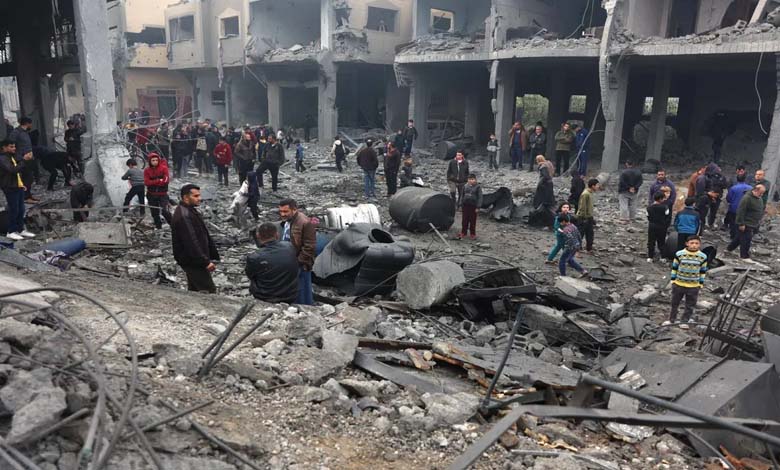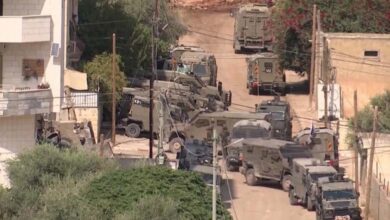Gaza Ceasefire Deal: Internal and Regional Pressures Shape the Limits of the Agreement

According to the Wall Street Journal, both internal and regional pressures are pushing Israel and Hamas toward a deal that could reshape the situation in Gaza and the wider Middle East.
Despite different motivations, both sides now face a decisive political moment that compels them to engage with initiatives led by the United States, Qatar, and Egypt.
-
2 Million Palestinians in 15% of Gaza’s Area… 36,000 People per Square Kilometer
-
Latest from Gaza: Ongoing Israeli Airstrikes and Ceasefire Negotiation Details
The proposed agreement involves a 60-day temporary truce during which Hamas would release ten living Israeli hostages in exchange for a larger number of Palestinian prisoners held in Israeli jails. The deal would also allow greater humanitarian aid to enter the Gaza Strip, which is currently facing an escalating famine crisis.
The paper reports that the recent war with Iran has been a political turning point for Israeli Prime Minister Benjamin Netanyahu. It has granted him more room to maneuver around his far-right coalition partners, who had threatened to bring down the government if a ceasefire in Gaza were agreed upon.
-
Palestinian political analyst: Gaza’s humanitarian situation is catastrophic and international pressure falls short of addressing the crisis
-
Latest Gaza News: Death Creeps Westward, Israel Issues Warning to Residents of 18 Areas
Israel’s success in striking Iranian nuclear facilities and targeting Tehran’s allies in Lebanon and Syria has strengthened Netanyahu’s position and opened the door to consider a pause in Gaza operations—without appearing weak to his base.
On the other side, Hamas is facing a dire situation in Gaza. Public discontent is mounting due to the blockade, dwindling food and medical supplies, and the collapse of infrastructure after nearly two years of Israeli airstrikes.
-
Palestinian Political Analyst: The Occupation is Deliberately Strangling Gaza… and the International Community Fails to Act
-
Gaza Latest: 31 Killed by Israeli Fire Near Aid Center
The assassination of key Hamas commanders and severe financial shortfalls have made it difficult for the group to maintain internal organization and pay its fighters.
Hamas’s announcement on Friday expressing willingness to engage in “serious negotiations” for a ceasefire reflects its awareness of the growing pressure. A deal could temporarily ease conditions for the civilian population.
-
U.S. Proposal on Gaza on Hamas’ Table… Talk of a Possible Breakthrough
-
Who Is the Yasser Abu Shabab Group Opposing Hamas in Gaza?
However, complex issues remain to be resolved in ongoing talks in Cairo and Doha—such as how Israeli forces would redeploy within Gaza, and how humanitarian aid would be delivered and distributed. The United Nations’ failure to manage aid effectively has led Israel to rely on private American security companies to safeguard relief warehouses.
U.S. backing is expected to play a crucial role in pushing the deal through the Israeli government, particularly during Netanyahu’s upcoming meeting with U.S. President Donald Trump in Washington on Monday.
-
Gaza Latest: Evacuation Orders in the North and Humanitarian Ship Intercepted at Sea
-
Café altercation puts France on alert – Gaza war echoes in Paris suburbs
Analysts say Netanyahu aims to use his success against Iran as political cover to proceed with the truce—and possibly even float the idea of early elections as a way to rebuild popularity lost since Hamas’s October 7, 2023 attack.
Commenting on Netanyahu’s position, former Israeli negotiator Daniel Levy said: “The truce might not be his first choice, but after striking Iran, he has a new victory narrative he can test to see if it gives him enough political momentum to push forward with a temporary ceasefire.”
Still, the road to lasting calm remains fraught. Israel refuses to commit to a full end to the war, while Hamas demands clear guarantees, making the current framework more of a trial phase than a final settlement.












